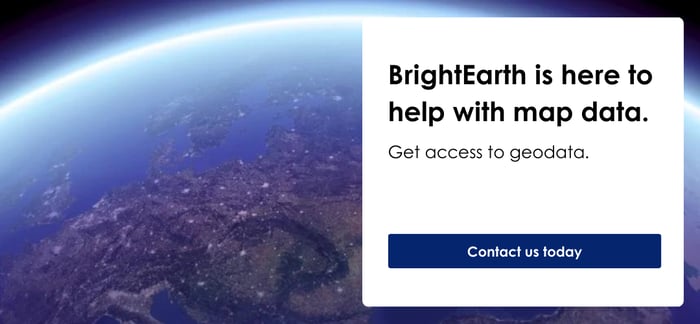Listen to audio version of this blog post:
Technology is redefining the world as we know it. The rapid development of Artificial Intelligence (AI) and an increasing need to digitise real-world locations are driving significant advancements in 3D urban modeling. LuxCarta, a leading innovator in geospatial technology, is at the forefront of these developments by introducing BrightEarth City Texturing. This solution brings an innovative, automated, and resource-efficient approach to 3D urban modeling.
The Promise of BrightEarth City Texturing
BrightEarth City Texturing promises accuracy. It provides low-polygon 3D models with high-resolution, seamless textures for real-time rendering. The models come from satellite imagery and ground images, if available. This ensures a realistic representation of urban landscapes.
The pipeline uses a single satellite image to extract building geometry, including attributes such as building height, roof shape, and roof texture. If ground images are available, the pipeline can also use these to texture facades in terms of architectural style accurately.
This approach fills a significant industry gap. Other methods use LiDAR and multi-view stereo reconstruction for accurate representations. However, they are resource-intensive and require significant post-processing. BrightEarth City Texturing offers a low-storage solution without compromising quality.
The technology forms part of an initiative to create digital twins of cities. These are essential for urban planning, simulation, training, and gaming applications.
A Blend of AI and Procedural Grammars
One of the significant innovations of BrightEarth City Texturing is its use of a hybrid approach. It combines artificial intelligence and procedural grammars. LuxCarta’s team used a UNet neural network, trained on 150 different cities across the globe, to classify each pixel into other classes, such as building, shadow, and eight different roof shapes.
LuxCarta applies its vectorization algorithm from this pixel classification to extract polygons delineating building roofs. Subsequently, the height of the buildings is estimated using detected shadows (unless a Digital Height Model is available).
If ground images are available, the texturing of the roofs and the facades takes place. A Content-Based Image Retrieval (CBIR) approach associates a sub-facade texture per ground image. Finally, applying grammatical rules generates textured 3D buildings from all the extracted semantic data.
Advancements in Roof Shape Extraction
BrightEarth City Texturing goes beyond just segmentation. The solution predicts eight classes of roof shapes per pixel. They are then aggregated per polygon, and a roof geometry is generated for each class adapted to the polygon outline.
This process overcomes the challenge posed by unbalanced roof shapes, where some shapes are more commonly found than others. LuxCarta addresses this by increasing the sampling weights of patches containing irregular roof shapes.
Faithful Facade Texturing
Using ground images enables the extraction of precise facade information for a fraction of the extracted buildings. BrightEarth City Texturing aims to texture the facades in a way that respects the architectural style of the building as much as possible.
To achieve this, LuxCarta uses an approach inspired by CBIR methods. They use a pre-trained model to extract deep features per image. This approach enables the system to correlate the extracted in-depth features with facade styles.
Scalability and Performance
One of BrightEarth City Texturing’s significant achievements is its scalability and performance. Even when only a handful of ground images are used per neighborhood, the system can effectively propagate textures to similar buildings in a cluster, thereby ensuring the architectural style of an area is respected.
In terms of performance, LuxCarta reports achieving a weighted precision of 75% and a weighted recall of 65% on their validation dataset of 67 diverse cities.
Concluding Thoughts
BrightEarth City Texturing is pushing the boundaries in 3D urban modeling. It leverages AI, procedural grammars, and ground and satellite imagery to generate high-quality 3D urban models.
These models fuel the digital transformation of industries from urban planning to gaming. We inch closer to a future where the digital and physical worlds coexist seamlessly.
